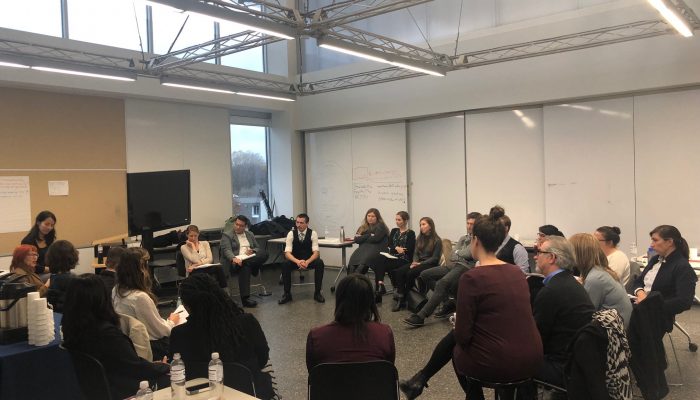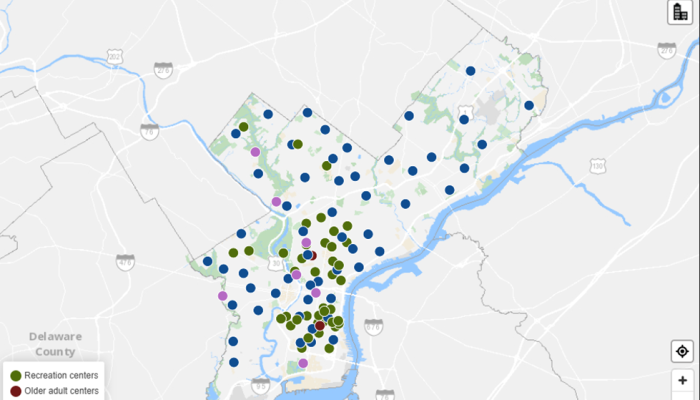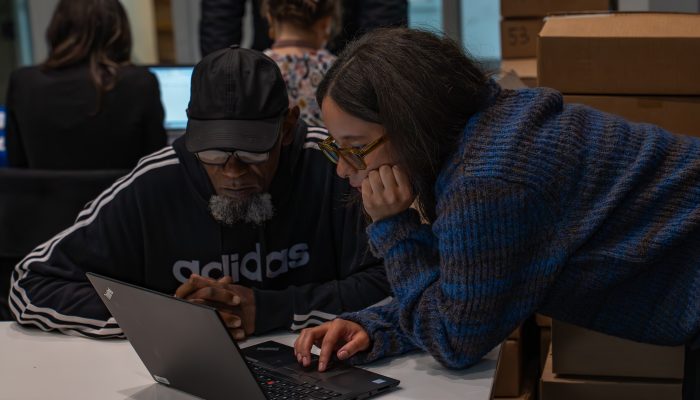Week 7: Charrettes & The Finale
Written by: Jessica Sones, Youth System Coordinator at the Office of Homeless Services
In my career to date, I have participated in hundreds (thousands?) of meetings, many of which have been focused on resolving conflicts and mapping solutions. This likely does not come as a surprise, but … not all have been effective. In the final class of the Innovation Academy, we discussed strategies for facilitating “charrettes”- collaborative sessions with an innovative atmosphere designed to bring together stakeholders to solve problems. Charrettes have a few characteristics that set them apart from ordinary meetings or workshops:
- Folks brainstorm as many ideas as possible (whether they are good or not).
- Participants impacted by the problem have equal input.
- Contrary ideas are welcomed.
- A spirit of cooperation and co-creativity are made paramount.
Charrettes foster a collaborative environment for folks to be creative and imagine new solutions, without having to filter out half-baked ideas. I’m sure that we all participate in meetings where ideas are shut down with a quick “No that won’t work.” However, the charrette environment proposes that an imperfect idea could be the spark to create an innovative solution. By creating an environment of cooperation and inclusion and where divergent viewpoints are welcomed, creative ideas can flourish. I don’t know about you, but to me, this is pretty exciting. I have had the privilege to participate in a few workshops that embodied the spirit of the charrette model, and they created a truly unique environment for innovation.
It’s finally arrived… the last day of our Fall 2018 Academy for Municipal Innovation! Check out some pics from our last class which was framed as an introduction to one of #PHLInnovationManagement’s most successful programs – Innovation Consulting🌟 pic.twitter.com/wwGNpg2gT6
— PHLInnovation (@PHLInnovation) November 13, 2018
I have also seen firsthand the power of the charrette principle of co-creativity: designing solutions in partnership with those most impacted by an issue. In my role in city government, I work specifically around the challenge of youth homelessness. There is a national movement in which young people with lived experience of homelessness must be at the table when creating solutions around youth homelessness. In my role, I am fortunate to work with some of the most collaborative and creative people I know—the young adults who make up the Office of Homeless Services Young Adult Leadership Committee (YALC). YALC is a committee of young adults ages 16-25 with experience with homelessness who advise the city on issues related to youth homelessness. YALC members are constantly challenging the status quo and coming up with new strategies to solve complex problems through the lens of lived experience. Innovation can truly flourish when city government engages with stakeholders impacted by an issue to co-create solutions, and the Young Adult Leadership Committee is an example of this.
The last Academy for Municipal Innovation class ended with an intimate debrief & share out of ideas that came from the final group work sessions!
What a creative & talented cohort🙌🏽 #PHLInnovationManagement pic.twitter.com/r5OjEZtTRc— PHLInnovation (@PHLInnovation) November 13, 2018
As we wrap up our last Innovation Academy session, I am energized and excited to take back new strategies and techniques to my work. The sessions have been jam-packed with innovation principles, methods for implementing innovation and human-centered design, and opportunities to connect with colleagues across city government. I look forward to bringing more co-creativity, cooperation and innovation into my work, and the Innovation Academy has given me new tools to make this happen.
Congratulations to all of our Grads!🎉 The Fall 2018 cohort of the Academy for Municipal Innovation was a huge success!!!🙌🏽 #PHLInnovationManagement pic.twitter.com/db8RGKJtsc
— PHLInnovation (@PHLInnovation) November 14, 2018
What is the Academy for Municipal Innovation?
AMI is a seven-week program that introduces participants to the principles and practice of innovation. Participants will learn to integrate tools and techniques of innovation drawn from design thinking, system thinking, business analytics, and ethnographic research to discover innovative solutions to complex real-world problems. The program will be delivered in a studio setting, anchored in Jefferson University’s (formerly Philadelphia University) signature nexus learning pedagogy of active, collaborative, and real-world learning. Each session will introduce practical techniques & tools that can be immediately applied at work to inspire innovation through collaboration.
Throughout the program, the City (Innovation Management) will offer opportunities to further develop the skills and tools that participants are learning in the classroom. Brown bag lunches, innovation consulting sessions, and workshops will take place throughout the fall to encourage students to engage with the material in the context of their everyday portfolios, and to provide them with a space to meet past graduates and learn about how they’ve integrated innovative thinking into their roles.




